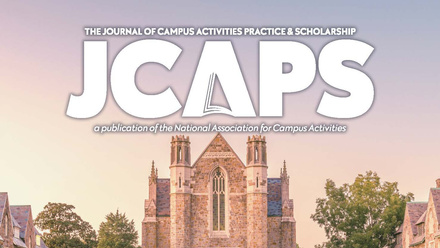Improving Social Connection on Campus: Tips from the US Surgeon General
**Note from Author: This is part 2 of looking into The Surgeon General's Advisory on the Healing Effects of Social Connection and Community as it relates to college students. If you haven’t had a chance to read over the information from part 1, please review that here for more context.**
In the previous blog, we looked over the US Surgeon General’s Advisory titled: Our Epidemic of Loneliness and Isolation and how it relates to college students in the US. This information provided context on the current state of social connection and detailed the impacts that isolation and loneliness have in the US, especially in young adults and college students. Not only is it important to know the profound impact of social connection on individuals and communities, but it’s also helpful to understand actionable steps for campuses and students alike to affect social connection on their campus.
Foundational Pillars for Building Social Connection on Campus
- Strengthening Social Infrastructure in Local Communities: To foster stronger social connections within college communities, it's crucial to strengthen the local social infrastructure. This can be achieved by designing environments on campus that encourage social interactions, such as parks and community areas. When looking at the layout of a community area, it’s also important to consider how people will socialize there. Are there multiple seating options to group together? Are students encouraged to congregate and mingle with their peers? Additionally, community connection programs, like volunteer opportunities and partnerships with organizations like food banks and humane societies, can provide avenues for students to engage with their local community. Not only do students get to contribute to a great cause, but they get to meet people that have common interests and build a connection through teamwork and a shared goal. This same logic can be applied to on-campus activities that revolve around a new group on campus, or an existing organization that could benefit from more people.
- Supporting the Development of Pro-Connection Technologies: Supporting the development of pro-connection technologies is another essential pillar of improving social connections among college students. On this topic, it is important to recognize the recommendation of “pro-connection” as not all technology solutions are for connection. Pro-connection technologies can include things like Facebook groups, campus created apps, and other solutions to help students connect better to each other, like Soco. Keep in mind, ensuring these technologies have a positive impact requires proactive moderation to encourage positive behavior when using user-generated content. It's also crucial to safeguard the well-being of users and the information they share to maintain a safe and supportive digital space for students. Ensure that these solutions have been vetted and consistently reviewed to ensure student safety and pro-connection values.
- Deepening Our Knowledge: Deepening our knowledge about social connection is fundamental to addressing this issue effectively. There are several documents that are accessible online for increasing public awareness of the importance of social connection and its impact on student wellbeing. Developing and coordinating a research agenda focused on social connections and accelerating research funding specifically at the campus level can also provide valuable insights into how to enhance social bonds among college students.
- Cultivating a Culture of Connection: Lastly, cultivating a culture of connection within college communities is one of the most important pillars, and it can be modeled, led and secured by staff and students alike. This happens from staying informed with information in the social connection space and more importantly, promoting values such as kindness, respect, service, and commitment to one another. Leaders and influencers within the college environment should model these connection values, setting an example for students, and encourage others around them to do the same. By expanding conversations about social connection in schools, workplaces, and communities, campuses can help create a culture where social bonds are prioritized and nurtured.
Recommendations for Schools and Departments
To create a more connected and supportive educational environment, schools and educational departments should consider implementing a comprehensive strategy that is bought into at all levels. This strategy should include the development of a strategic plan that prioritizes school connectedness and social skills, with a tracking mechanism in place to measure progress and outcomes. Tracking the progress can be formalized via sending out a survey to students and faculty, or casually in the form of an online poll via Instagram or other channels.
It is also recommended to integrate social connection into health curricula, ensuring that students receive up-to-date information about the profound impact of social connection on their physical and mental health. This curriculum should cover key risk and protective factors while providing strategies to enhance social connection effectively and can be implemented at health and counseling centers on campus.
Moreover, educational institutions can benefit from implementing socially based educational techniques, such as cooperative learning projects. These projects not only improve educational outcomes but also foster positive peer relations, creating a more inclusive and supportive learning environment. Creating a sense of belonging is crucial, and schools can achieve this by adopting equitable classroom management practices, establishing mentoring programs, and forming peer support groups. These groups offer students the opportunity to lean on one another and learn from their peers' experiences, strengthening their social connections.
Furthermore, schools should provide valuable resources to both students and staff, emphasizing the benefits of social connection and offering guidance on how to enhance it within the campus community. These resources can be shared with print-offs, on the campus website, through social media and all other methods where communication is distributed. By prioritizing these recommendations, educational institutions can play a pivotal role in nurturing the social well-being of students and fostering a positive and connected learning environment.
Ways for Students and Staff to Grow Social Connection on Campus
One of the best (and easiest) ways for social connection to improve on campus is by being aware of social connection and finding small ways to connect better with others on campus.
The report spells out 12 simple ways to do this, and they range from “Understanding the power of social connection and the consequences of social disconnection” to “Actively engaging with people of different backgrounds and experiences.”
To view a consolidated list of these with more detail, check out the PDF here.
Moving Forward
These foundational pillars and recommendations underscore the significance of fostering social connections within educational environments, and we encourage both students and staff to continue learning and actively seeking ways to enhance social connection. Whether it's by learning a little more about social connection or implementing one of the 12 ways to connect better on campus, we encourage everyone to try to live a life a little more socially connected. By understanding the profound impact of social connection and implementing even small changes, we can all work towards stronger campuses that are more connected, less lonely and more impactful for everyone.






